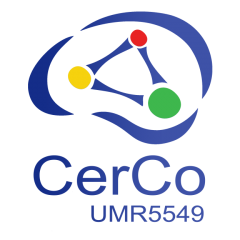Transcranial Magnetic Stimulation (TMS)
Since the first demonstrations in 1985 of cortical magnetic stimulations in humans, Transcranial Magnetic Stimulation (TMS) has been widely developed in a therapeutic aim as well as in cognitive neuroscience research. In 2008, CerCo acquired a TMS machine for human experimentations. At the moment, it is used as part of studies on oscillatory mechanisms of cortical activity and to tackle high cognitive functions like visual attention and memory. CerCo has a Magstim Rapid2 TMS machine of 3.5 Tesla, producing a biphasic current, and 2 figure-of-eight stimulation coils (70mm). When the coil is pressed against subjects’ head it produces a magnetic field which modulates neural activity, affecting local field potentials. The TMS pulse has a very good spatial resolution (1-2cm) and temporal resolution (the pulse lasts less than 1ms and the neuronal effect is totally abolished in 1s). During TMS experiments, ElectroEncephalography (EEG) could be simultaneously recorded. Matlab and EEGLAB are the software used for the analysis of the behavioral and EEG data.

